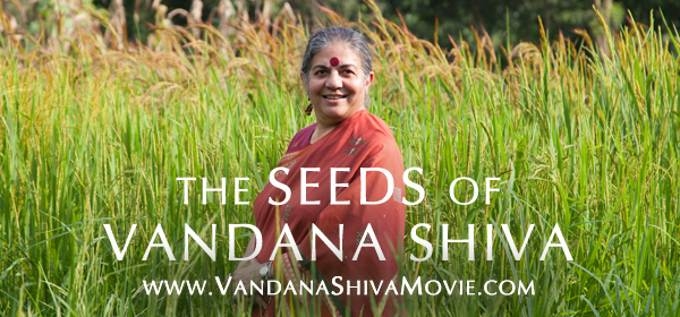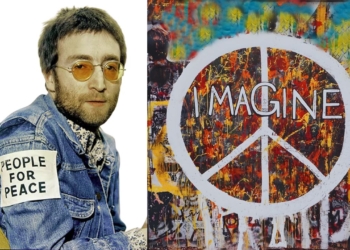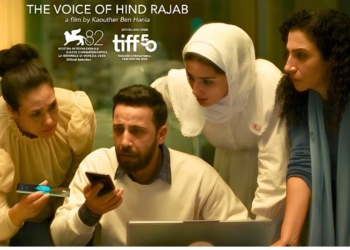The filmmakers of “The Seeds of Vandana Shiva” are allowing for a FREE special stream through April 8, 2021. CLICK HERE TO SUPPORT getting the film out into the world to build awareness around industrial agriculture versus regenerative farming and food.
By Dr. Joseph Mercola | mercola.com
STORY AT-A-GLANCE
- Vandana Shiva, Ph.D., is a physicist and activist who works tirelessly to defend the environment and protect biodiversity from industrial agriculture, GMOs, and patented seeds
- Shiva’s involvement in the contemporary ecology movement began with the Chipko movement in 1973, in which Himalayan villagers, primarily women, fought back against loggers in the best way they could, by physically embracing the trees
- Shiva went on to found the Research Foundation for Science, Technology and Ecology, which she called the Institute for “Counter Expertise” because its goal was to counter the “expertise” of the destroyers and “bring to the front the knowledge of those who were defending the Earth”
- She also exposed the dark side of the Green Revolution and founded Navdanya, a nonprofit organization promoting biodiversity, organic farming, and seed saving
- There are now at least 127 seed banks in India, which will keep growing, along with a network of farmers and seed savers who have been trained in organic farming
Vandana Shiva, Ph.D., is a physicist and activist who works tirelessly to defend the environment and protect biodiversity from multinational corporations. Her life's work has culminated in the creation of seed banks that may one day save future generations' food sovereignty, but how she got there is a fascinating story, chronicled in the documentary “The Seeds of Vandana Shiva.”
Shiva, “a brilliant scientist” who became “Monsanto's worst nightmare and a rock star of the international organic food movement, “1 grew up in a Himalayan forest, where her father, a forest conservator, carried out inspections. She would travel up to 45 miles a day with her father as a young girl, and as they traversed the forest he taught her everything about the trees, plants, and herbs therein.
“We had a classroom out in the forest,” Shiva said, but her formal studies were done in a convent which, at that time, didn't regard science as a subject fit for girls. Shiva wanted to study physics, though, and she was especially intrigued by Einstein and his connections of intuition with science. “Everyone has their favorite person that they want to be,” she said. “Einstein was the shaper of the dream of my life.”
A Search for Knowledge as a Whole
Shiva got a scholarship to attend Chandigarh University in Punjab, India, and from there she went on to the Bhabha National Atomic Research Center in Mumbai, India, for training in atomic energy. Later, her sister, a medical doctor, asked her about the health and environmental effects of nuclear technology and radiation.
As Shiva grasped the devastation nuclear energy had caused, she said, “I realized that a science that only teaches you how to modify nature without the understanding of what that modification does to the larger world is not a complete science.”
She gave up her idea of being a nuclear physicist and instead went looking for knowledge as a whole. She studied on her own, finding quantum theory, and while pursuing a Ph.D. in Canada, went to visit some of her favorite spots, including an oak forest she held close to her heart.
When she arrived, the forest had been cut down to make room for apple orchards, changing the entire microclimate in the area. The loss of something that she felt was a part of her impacted her deeply and set the stage for her environmental activism.
The Tree Hugging Movement Is Born
Shiva states that her involvement in the contemporary ecology movement began with the Chipko movement in 1973.2 The timber mafia were cutting down trees throughout the Indian Himalayas, taking away this precious resource from the rural villagers who depended on the forest for subsistence.
The government denied villagers access to the land and the lumber, while the logging companies cleared out forests, leading to problems with erosion, depleted water resources, and flooding.
The villagers, primarily women, fought back in the best way they could, by physically embracing the trees to stop the loggers. Chipko is a Hindi word that means “to hug” or “to cling to, “3, and the movement spread, creating what became widely known as the tree-hugging movement.
The women of Chipko taught Shiva how much women who hadn't been to school knew about the interconnectedness of nature, but it took a major flood to make the government realize that what the women were saying was right. The revenue that came in from the forest logging was little compared to what they had to pay for flood relief.
In 1981, the government listened to the women and ordered a ban on logging in the high-altitude Himalayas, while tree-hugging became a worldwide practice of ecological activism.
1982: The Water Wars
The Ministry of Environment invited Shiva to conduct a study on the impact of limestone mining in the Mussoorie hills. There were “scars all along the mountains,” and she went straight to the women in the community and asked what the key issue was. It was water. The rainfall in limestone creates giant caves and cavities, which act as nature's aquifers.
Up in those mountains, Shiva said, the mining was robbing the valley of its water source — billions of dollars worth of water resources — while the miners' wastes were destroying stream flows, villages were being washed away and workers were being exploited.
When word of Shiva's study got out, both her father and infant son were threatened, but she continued on with her research, following her father's advice that “as long as you follow your conscience you have nothing to fear.” Ultimately, Shiva's calculations showed that the limestone left in the mountain contributed more to the economy than the extraction of limestone from the mountain.
Just as in the case of the forest in the Himalayas, in which the government was forced to recognize that the forest left standing contributed more than their conversion into the timber. Shiva's study was the basis of a Supreme Court ruling that led to the mining being discontinued.4
The Research Foundation for Science, Technology, and Ecology
Shiva went on to found the Research Foundation for Science, Technology, and Ecology, which she called the Institute for “Counter Expertise.” The goal was to counter the “expertise” of the destroyers and “bring to the front the knowledge of those who were defending the Earth and their lives.”
Shiva was able to carry out independent research because she didn't rely on funding from outside sources. “You can have a billion-dollar grant and hire researchers to do the work, who don't know about the issue,” she said, or you can have just a few thousand dollars and work with communities, where the people become the researchers. This is important, Shiva noted, as “When money is your master, then your conscience is no more your guide.”
During this time, she also challenged the standing law in India, which stated that the father would automatically become the natural guardian of the children in cases of divorce. She went directly to the Supreme Court and became the first case in which the court decided the mother should get custody of the child, setting precedent for all of India.
In 1985, she was invited to Nairobi for a U.N. conference on women, where she spoke about women and the environment, including the Chipko movement, stating that it was the first time the link was made between environmental degradation and its impact on women. In 1988, her book “Staying Alive: Women, Ecology, and Development” was published, marking the beginning of eco-feminism. Shiva went on to write more than 20 books.
The Violence of the Green Revolution
In 1984, Shiva was working for United Nations University on conflicts over resources when an eruption of extremist violence broke out in Punjab. Religion was blamed for the unrest, but it was more likely a battle over resources. That same year, a gas leak from a pesticide plant in Bhopal, India, had devastating consequences, killing 3,000 people immediately and 30,000 more in the aftermath, with many still suffering health effects to this day.
“My head is in a spin,” Shiva said of her mindset at the time. “That's when I realized Punjab is the home of the Green Revolution.” The Green Revolution is the name given to the introduction of chemical agriculture to the developing world, which was promised to bring more food, more prosperity, and more peace.
The movement even earned a Nobel Peace Prize but, Shiva said, “death ensued.” It didn't add up. “You're supposed to give a Nobel Peace Prize for peace, but this is war,” she said. When she turned her research efforts toward the Green Revolution, she found that, as a result of this new chemical-based agriculture, soils and rivers were drying and desertification was taking place, while 25% of small farmers were dispossessed.
“This was an agrarian crisis,” Shiva said, “not a religious conflict.” She uncovered that many of the people being killed were those in positions of bureaucratic power, “controlling the architecture that allowed the Green Revolution to happen.”
This led Shiva to write another book, “The Violence of the Green Revolution.” Once she understood that the promises of the Green Revolution were a lie, she moved her focus to truly sustainable agriculture.
Putting Patents on Life
In 1987, Shiva was invited to a biotechnology meeting in Geneva, Switzerland, which was attended by some independent scientists along with U.N. officials and the agrochemical lobby, which would soon turn into the biotech lobby.
The focus was on genetically modified organisms (GMOs) that would allow them to patent seeds, securing the GMO seeds' future growth and the ability to collect royalties from farmers.5 An international treaty was discussed to move GMOs and patented seeds globally. Shiva told IDR:6
“This is why the Intellectual Property Rights (IPR), World Trade Organisation (WTO), General Agreement on Trade in Services (GATS), and others came into the picture. What was most horrifying was their ambition to limit this to a total of just five companies that would control food and health globally. Today, we have four — I call them the poison cartel.”
While the spin was to position GMOs as essential to feeding the world, Shiva said, “the reality was that they were the door to owning life on Earth.” The patented seeds also necessitated monocultures, so the same seeds could be sold everywhere, and people could be replaced with herbicides and machines. It ushered in industrialized farming while eliminating small farms.
On the flight home from Switzerland, she said, she began thinking about how to deal with this, and by the time she got off the flight, “A seed was speaking to me … Farmers with their own seed, fighting for their seed freedom, are the biggest force in the world against seed monopoly.”
Navdanya: The Right to Save Seeds
In 1994, Shiva founded Navdanya, a nonprofit organization promoting biodiversity, organic farming, and seed saving. She traveled to villages where women would give her seeds, and she started saving them and encouraging farmers to do the same. A training and research farm was created in order to have a seed bank where all the seeds were collected and to have research on how biodiversity and native seeds can feed the world.
But saving seeds and creating seed banks was only one aspect. The other was to create awareness, including translating the information into different languages to tell the world about the importance of saving seeds and protecting crops. There are now at least 127 seed banks in India, which will keep growing, along with a network of farmers and seed savers who have been trained in organic farming.
Shiva has also traveled the globe to warn other countries, including those in Africa, about plans to displace rural farmers so investors can turn the land into industrial farms to export the commodities. She said:
“A handful of multinational corporations … is driving species extinction. The poisons they have deployed are pushing the disappearance of bees, the disappearance of pollinators, the disappearance of insects, the disappearance of biodiversity.
Industrial agriculture is not only destroying biodiversity, it is destroying the soil and releasing large amounts of greenhouse gasses to the atmosphere … This is not a food system. It is not an ecological system. It is a recipe for destruction of the planet's health and the destruction of our health.”
Regenerative agriculture and animal husbandry are the next and higher stage of organic food and farming. They're not only free from toxic pesticides, GMOs, chemical fertilizers, and concentrated animal feeding operations, but are also regenerative in terms of the health of the soil, the environment, the animals, and rural farmers. As Shiva put it, “Regenerative agriculture provides answers to the soil crisis, the food crisis, the climate crisis, and the crisis of democracy.”7
In short, regenerative agriculture practices aim to rebuild soil health, restore ecosystems and promote human health through the growing of nutrient-dense food, while providing farmers with economic and financial stability. Shiva is confident this can be done, as long as humans embrace their interconnectedness while acting on an individual level to be agents of change:
“Food can be grown in abundant, ecologically sustainable and just ways. But to do this we need a shift in our perception. We need a change in paradigm. We are part of nature. We must participate in her processes. We have to understand our interconnectedness, our oneness on this Earth. But this is not how Big Food and Big Agriculture works.”
 About the Directors I believe in bringing quality to my readers, which is why I wanted to share some information about the Directors, Camilla Becket and Jim Becket, from “The Seeds of Vandana Shiva.” Here is a little more about them and what went into making this film. Thank you Camilla and Jim for sharing with us. Camilla grew up in apartheid South Africa and was an activist in the anti-apartheid movement. She managed outreach for independent publishers who originated works by anti-apartheid thinkers and artists, including Nelson Mandela and Desmond Tutu. She launched Becket Films with Jim in 2005 with a mission to focus on international environmental issues, social justice, and health. Camilla has co-produced several Becket Films projects, including films for the Religion, Science, and Environment series about besieged water bodies around the world and what can be done to restore them. Jim brings a varied career to his filmmaking: Human rights lawyer, journalist, and author. As Director of Public Information for the United Nations High Commissioner for Refugees in Geneva, Jim made several films about refugee problems around the world. Moving to Los Angeles, he worked as a screenwriter, producer, and director of TV and narrative movies. Since then he has co-produced several documentaries on contemporary environmental issues, including The Green Patriarch, The Amazon: The End of Infinity, The Arctic: The Consequences of Human Folly, and El Misterio del Capital de Los Indigenas Amazonicos. Jim's awards include festival Best Film awards, two Humanities awards, and a George Foster Peabody award. What was your inspiration for making this film? We were first introduced to Vandana Shiva at a series of environmental conferences almost twenty years ago. And like most people on their first meeting with her, realized immediately that we were in the presence of an eco-activist rock star. The more time we spent with her, and learned about her life experiences, the more we, as filmmakers, were inspired to tell her story. Her life has embodied the notion that “one person can make a difference”, and so finally we asked if we could try to capture her journey on film. She agreed. The Seeds of Vandana Shiva is the result. Why seeds? After learning that the real goal of developing GMOs was for patents to monopolize the world’s seed supply, Vandana began speaking out about the ecological and social costs of industrial agriculture and building the movement to save native seeds. And through her evolution as an activist against the global Goliaths of food and farming, we also wanted to shine a light on where we are today — industrial food production accounts for up to 40% of carbon emissions, while pesticides destroy soils, water systems, and biodiversity, and harm human health. Contrary to the spin that industrial food is essential to feeding the world, today more than two billion people face food insecurity across the globe. The good news is that The Seeds of Vandana Shiva also shows how we can tip the scales, each in our own way: Vandana speaks for an ecologically regenerative vision for food and farming which we can all engage in — millions already do. But we need millions more for real change to occur. In the end, our hope is that Vandana’s extraordinary story will act as a catalyst for more people to understand the issues at stake, and to deeply inspire them to be part of the change. What was your favorite part of making the film? There were many rewards to making The Seeds of Vandana Shiva, but the best part was making the trips to Dr. Shiva’s organic farm, Navdanya, in the foothills of the Himalayas. Not only is Navdanya the center of Dr. Shiva’s research and seed saving work, but it is also an education center where people travel from all over India and elsewhere in the world to learn about seed saving and ecological food systems. It is where we found Dr. Shiva at her most relaxed and willing to share her experiences with us. We also loved how many volunteers stepped up to offer time and expertise during production. It was so gratifying to realize how many people really wanted this film to be made! Now we are enjoying the process of sharing The Seeds of Vandana Shiva with the world, in the hope that it will inspire more people to advocate for regenerative, organic, and fair-traded food. Where do the proceeds to your film go? We financed filming and production with foundation grants, crowd-funders, and a lot of sweat equity. Now we’re fundraising for an outreach and impact campaign, for more people to be able to see this film. There is no time to lose. Our climate, our environment, our health, and our democracies are in crisis. Sharing Dr. Shiva’s experience and wisdom more widely with the world could not be more timely or urgent. Why? Because the ecological and social crises intersect in agriculture and the way we grow food. The good news is that no one explains the issues more clearly or what we can do about them other than Vandana Shiva. Also, documentaries — that both inform and entertain — are proven to be a powerful means to introduce audiences to issues in a way that can move them to advocate for much-needed change. It’s happened before and it can happen again, but we can’t do it alone. We need everyone who cares about the climate, the environment, and the wellbeing of human communities to support our outreach, in whichever way that they can. All income raised will be for translations, communications, education, and strategy materials, and to facilitate community screenings around the world. Please support The Seeds of Vandana Shiva impact campaign here!  |










![Who Is Bobby Kennedy? [30-Minute Film on RFK Jr.’s Life, Narrated by Woody Harrelson]](https://consciouslifenews.com/wp-content/uploads/2024/05/who-is-bobby-kennedy-350x250.jpg)





